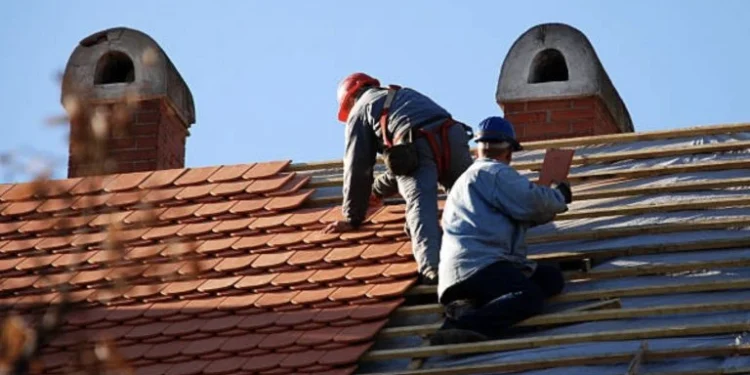One Fast Inspection That Protects Your Entire Home
Most homeowners think roof damage comes from dramatic events—storms, leaks, fallen branches, or aging shingles. The truth is far less exciting: most major roofing failures start with one simple issue that goes unnoticed for years. A weak spot forms, water seeps in, and the damage slowly spreads. By the time you see the first stain on your ceiling, the real problem is already deep inside the structure.
There’s one basic roofing check that prevents most of this: inspecting and maintaining the condition of your roof’s flashing and seal points. This check takes minutes for a professional and saves homeowners from thousands of dollars in repairs. Whether you handle roof care yourself or rely on a Commack Roofing Contractor, this simple inspection is one of the highest-value steps you can take to protect your home.
Why a Flashing and Seal Inspection Matters
Flashing is the metal barrier installed around chimneys, vents, skylights, roof edges, and wall intersections. These areas are naturally vulnerable because they break the smooth surface of the roof. They’re also the first places wind, water, animals, and temperature changes attack.
If your flashing cracks, bends, lifts, rusts, or separates by even a fraction of an inch, water gets in. Not in dramatic ways. Not in a waterfall through your ceiling. It starts slow. Quiet. Almost invisible. Moisture moves behind shingles, into underlayment, across roof decking, and into insulation.
By the time water appears inside your home, the internal damage is already advanced.
A flashing check catches these failures before they turn into:
- Rotting roof boards
- Mold in your attic
- Weak framing
- Sagging ceilings
- Insulation decay
- Expensive structural repairs
It’s the smallest inspection with the biggest payoff.
The Points Most Homeowners Never Look At
To understand how powerful this check is, you need to know the areas where flashing failures occur. These are the zones where 90% of all roof leaks start, even on newer roofs.
Chimneys
Chimneys move slightly over time as the home settles. That movement pulls flashing apart. Weather exposure then opens gaps. Without a check, leaks form around the chimney base long before you notice.
Skylights
Skylights collect water. Their flashing must be perfect. Debris can trap moisture, seals dry out, and flashing can warp under sun exposure.
Vent Pipes
These small pipes look harmless, but they rely on rubber seals that crack with age. One tiny split in the boot lets water in every time it rains.
Roof-to-Wall Connections
Any place where a vertical wall meets the roof is a high-risk zone. Step flashing must be layered perfectly. If even one section shifts, the whole area becomes vulnerable.
Valleys
Not all valleys use metal flashing, but many do—and they handle the heaviest water flow of any part of the roof. A small gap becomes a major leak quickly.
Roof Edges
Edge flashing or drip edges push water into gutters. When they weaken, water flows behind fascia boards, rotting wood and soaking attic corners.
Dormers
Dormers have multiple joints, edges, and seams. They rely heavily on proper flashing. Even a small oversight becomes a leak point.
A simple flashing inspection covers all these areas in one go.
Why Flashing Fails Faster Than Shingles
Homeowners often judge roof health by the condition of their shingles. But shingles age slower than the materials protecting your roof’s weak points.
Flashing fails because:
- Metal expands and contracts
- Sealant dries, cracks, or breaks down
- Wind lifts edges and corners
- Debris clogs water paths
- Rust forms on older materials
- Animals tug at weak points
- Temperature extremes cause separation
Even a high-quality roof becomes vulnerable if the flashing fails.
The Sealant Problem No One Talks About
Many “quick fixes” rely on sealant—caulk, tar, or roof cement. But sealant isn’t a long-term barrier. Sunlight dries it. Temperature changes crack it. Moisture breaks it down.
If old sealants are covering your flashing, your roof is at higher risk. Removing dried sealant and replacing it with proper flashing installation is one of the best preventive measures homeowners can take.
The Check Takes Minutes—The Damage Takes Years
A professional roofing check focuses on:
- Loose or lifted flashing
- Cracks in sealant
- Rust or corrosion
- Gaps where flashing meets shingles
- Misaligned step flashing
- Worn chimney counterflashing
- Cracked vent boots
- Weak drip edges
Each issue is tiny on its own. Each one becomes destructive when ignored.
A trained eye can find weaknesses early—and fix them on the spot.
The Hidden Damage You Avoid with This One Check
Most homeowners don’t realize how far a flashing leak can reach.
A tiny gap can lead to:
- Mushy roof decking
- Mold deep inside attic wood
- Sagging ceilings
- Failing insulation
- Pest infiltration
- Interior wall discoloration
- Warping window frames
- Wet electrical wiring routes
These are expensive, invasive repairs. And they all start from a simple flashing failure that could have been caught in minutes.
The Seasonal Factor
Weather changes strain your roof in different ways. That’s why this inspection should happen at least twice a year.
After Winter
Snow and ice cause expansion and contraction. Flashing can pull apart during freeze-thaw cycles.
Before Storm Season
Wind is the biggest enemy to loose flashing. Reinforcement now avoids emergency repairs later.
After Heavy Rain
Clogged gutters and pooling water stress flashing near roof edges.
Before Summer
Sun and heat weaken sealants and warp metal.
A predictable routine keeps your roof protected year-round.
Why This Check Works Better Than Most Repairs
Most roof repairs happen after damage occurs. This check works differently. It targets the areas where damage begins. Addressing problems early means the roof never gets the chance to fail.
It’s proactive, not reactive.
It’s preventive, not corrective.
It’s strategic, not cosmetic.
For most homes, this single inspection does more to prevent future roof damage than replacing shingles, patching leaks, or adding coatings.










